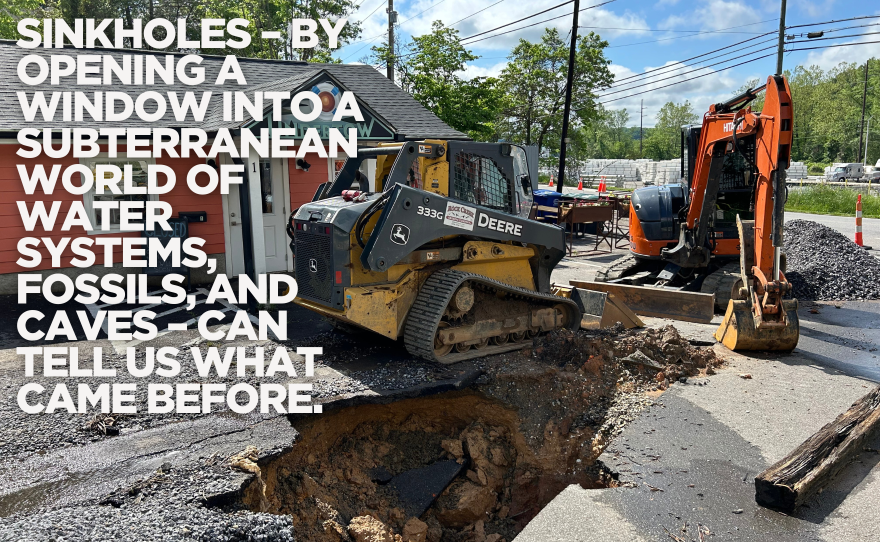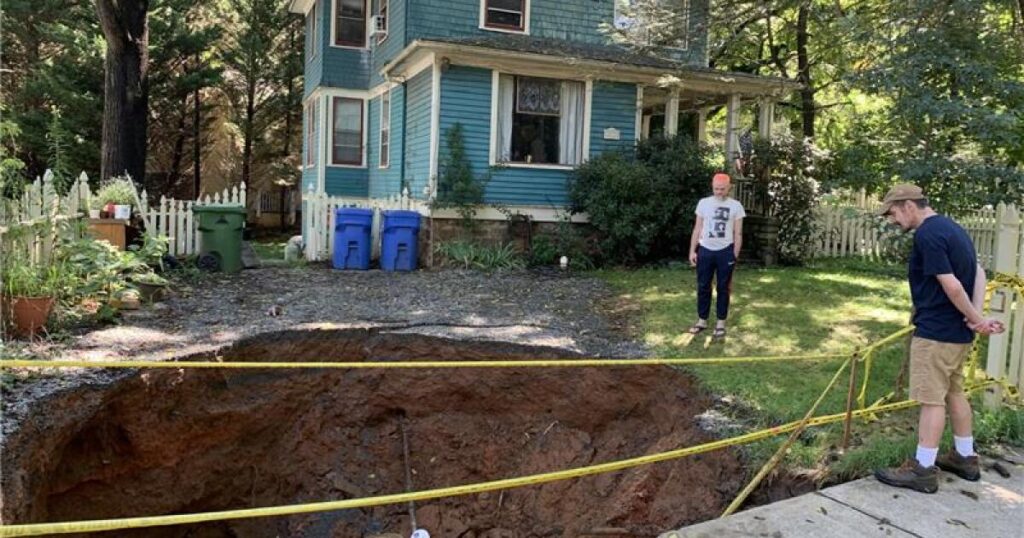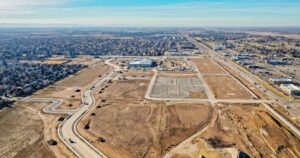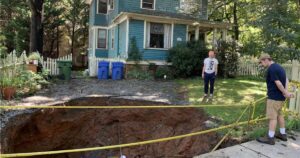This report is brought to you in collaboration with BPR and the nonprofit environmental media organization, Grist.
In Asheville, North Carolina, a peculiar fascination with sinkholes has taken root among the locals. Lauren Bacchus is among the residents drawn to these geological phenomena, which have increasingly appeared across the city. As a member of the Asheville Sinkhole Group, an online community of over 3,400 people, Bacchus engages in discussions about these mysterious voids and even sports a T-shirt with the phrase “For the love of all things holey.”
Interest in sinkholes spiked recently when a small pit emerged at a busy intersection in Asheville. Bacchus reflects on how these sinkholes highlight the fleeting nature of human-made structures. “I don’t want to discredit that sinkholes can cause a lot of damage and hurt people, but they do evoke this feeling of excitement and curiosity and mystery,” Bacchus commented. “It’s a void that opens up where you thought something was solid. And that’s the reality of the ground we walk on all the time.”
Following Hurricane Helene, the Appalachian region, including Asheville, has been grappling with an increase in sinkholes due to the resultant flooding and infrastructure damage. These sinkholes vary in size, with some spanning a few inches and others reaching substantial dimensions. Local road crews have been kept busy addressing these issues.
“I don’t want to discredit that sinkholes can cause a lot of damage and hurt people, but they do evoke this feeling of excitement and curiosity and mystery,” she said. “It’s a void that opens up where you thought something was solid. And that’s the reality of the ground we walk on all the time.”
City officials, including Clay Chandler, the city’s water resources spokesperson, report a rise in sinkhole incidents following the hurricane. “We’re definitely seeing an elevated number of sinkholes since Helene. Most of the ones we’ve encountered have been caused by culverts that have collapsed,” Chandler explained.
Bacchus joined the sinkhole group in 2019, around the time a North Asheville parking lot famously caved into a 36-foot-wide and 30-foot-deep cavity, making national news. Despite property owners’ attempts to fill it with concrete, the site was deemed unsafe, leading to prolonged vacancy.

Asheville has been the site of numerous sinkhole incidents over the years. Local journalist and photographer Jason Sandford documents these occurrences as part of his “#sinkholepatrol” project. He recalls a dramatic event in 2020 when a sinkhole near Gold’s Gym nearly claimed a truck, requiring a tense rescue operation by a tow truck company.
Another notable incident occurred late last year when a Mars Hill Waffle House lost part of its parking lot to a sinkhole, leading to the closure of the establishment.
Sinkholes in the Appalachian region can arise from both natural and human causes. The local geology, characterized by karst topography, is conducive to sinkhole formation. However, in Western North Carolina, where limestone is absent, sinkholes often result from human activities like construction and poor drainage systems.
The 2019 Merrimon Avenue sinkhole was a consequence of a corroded pipe beneath a paved-over natural stream. This instance underscores the human role in exacerbating sinkhole occurrences. The United States Geological Survey maps show regions like Tennessee, Kentucky, and Virginia as high sinkhole risk zones.
Climate change and extreme weather events like Hurricane Helene are believed to increase the frequency of sinkholes. Ernst Kastning, a retired geology professor, explains that both natural and human-induced sinkholes can form when water flow is altered, creating void spaces underground. “If you come in there and dig something or put in something or build something or modify the water flow … you’re likely to have nature react to that,” Kastning said.

Why climate change means more sinkholes
Kastning further elaborates that sinkholes often form as a natural response to significant changes, like storms, which can disrupt underground water systems. Human activities that alter the landscape can also contribute to sinkhole development.
“The recovery time, which of course is human beings fixing everything, putting things back together, or letting nature run its course, is obviously much longer than the time it takes for the event to happen,” Kastning noted.
Geological processes, combined with climate change-induced weather patterns, suggest that the frequency of sinkholes may continue to rise.

A great place to become a fossil
Meanwhile, in Gray, Tennessee, an ancient sinkhole at the Gray Fossil Site offers a unique glimpse into prehistoric times. This filled-in 4.5-acre sinkhole serves as a rich repository for fossils, providing scientists a window into the past. “When a place is a good place to live, it’s also a good place to die!” said Matthew Inabinett, the museum’s collections manager.
The site has yielded fossils from species such as giant squirrels, mastodons, and rhinos, among others. These findings allow researchers to study climate conditions from the Pliocene epoch, a period that was warmer than today’s climate and offers parallels to current climate change projections.

Inabinett emphasizes the importance of these findings for understanding the region’s biodiversity and climate history. “The Southern Appalachians are one of the most biodiverse regions in North America,” Inabinett said. “To study this time period, the early Pliocene, is really useful for understanding how that diversity originated.”

For Bacchus and many others, sinkholes offer a chance to ponder the hidden complexities beneath our feet. “I am attracted to sinkholes because of the humbling feeling they evoke,” she said. “I am reminded I am a small animal on this planet, and there’s more going on below the surface than we may realize.”







